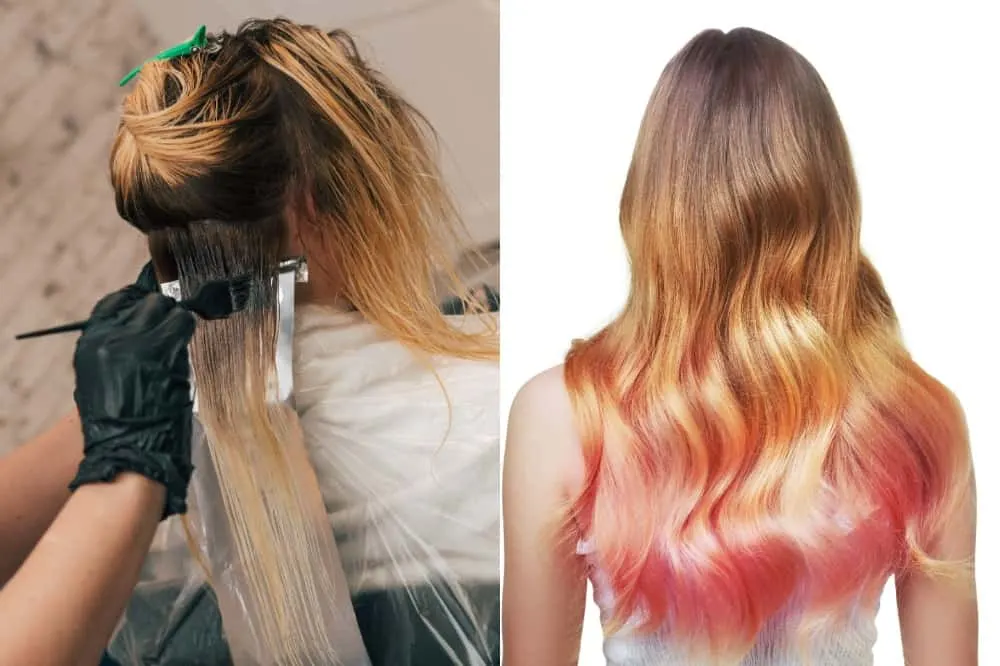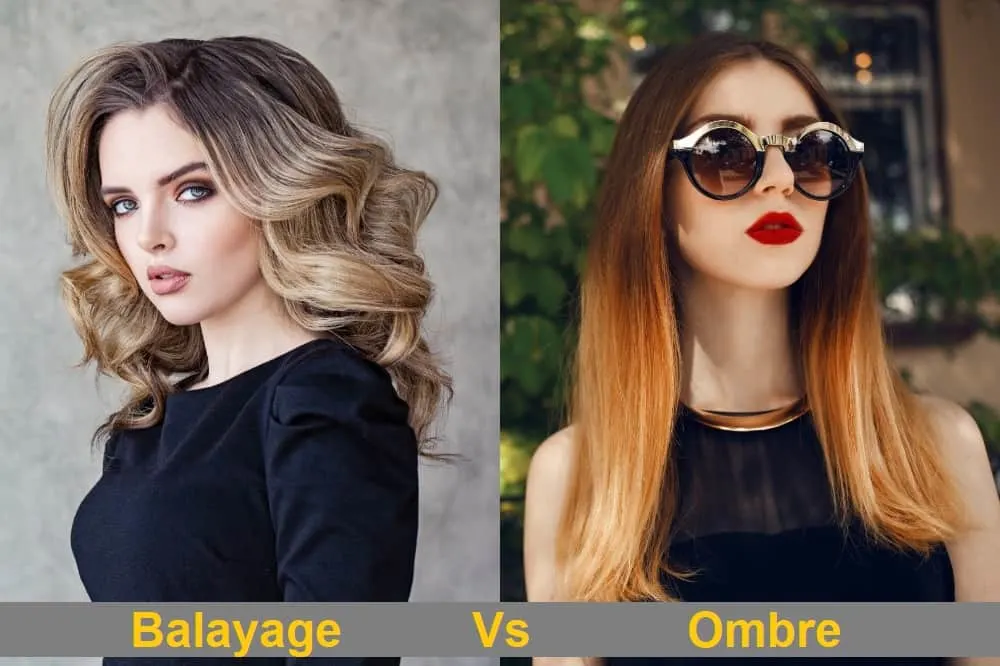So you’re looking to change up with your hairstyle, but adding just one new color isn’t enough— you want a bold look with two colors mixing elegantly together. Luckily, you have multiple options.
In other words, you’re looking for an Ombre hairstyle, or maybe a Balayage look. What’s the difference again?
If you’re not sure about the subtleties and details surrounding an ombre vs. balayage style, you’re far from the only one. That’s why we’ve put together an in-depth look at the difference between ombre and balayage hair color.
So what is Balayage?

The word “Balayage” comes from a French word meaning “sweep” or “paint,” and that is exactly what this dying technique relies on. It involves a stylist or hair professional painting on the dye by hand instead of the foils of traditional hair dying.
The aim of this is for the highlights to look natural and sun-kissed, and a good Balayage style will feature ribbons of light-toned hair without a heavily dyed appearance. This can be done for multiple colors and styles of hair, so if you’re looking for bright highlights or subtle tone differences, you can use Balayage no matter what your natural color is.
Some stylists say that a professional Balayage style should have thicker bands of highlights toward the ends of the hair, with small, close pieces around the roots, leading to a natural cascading effect. The dye is also typically applied on the hair’s surface, and not saturated throughout all of the hair, for a softer effect than other highlighting dyes.
Styles like Balayage are often best left to the professionals, especially since this one requires a (hopefully experienced) person to apply the highlighter by hand. Improper application of the Balayage highlighting dyes can result in patchy colors and missed areas.
What is Ombre?
The general definition of Ombre— at least as far as hair is concerned— is a graduated two-tone color scheme. While the literal definition is closer to “shaded” or “shading,” this can mean multiple things. Generally speaking, an Ombre hairstyle is one that transitions from light to dark hair or dark to light hair.
Designed to be more low-maintenance (and cheaper) than other hair-dye-reliant styles, the Ombre starts with one color at the roots of the hair and then changes throughout the middle, finishing with a different color at the end. This creates a flowing two-tone look that affects all of the hair from roots to ends.
A typical Ombre application involves adding the lighting dye to the hair in horizontal sections, layered for full saturation, and then blended, going upward for a smooth transition. The resulting color is more bold and deliberate than the typical Balayage style and often contains a more stark contrast between the lightened and darker hair.
After dying your hair for an Ombre look, what you generally end up with is a gradual color shift from your roots to the ends of your hair. The two colors, length, and other elements of style are up to you!
Difference Between Ombre and Balayage
Balayage is the technique used to obtain the ombre. On the other hand, ombre is a style, a stunning gradient of color. You can use the balayage technique to create so many effects for the hair.
The outcome resembles the dimensional growing-out hair, with lots of texture and finesse. The lighter small sections are painted on the surface to give you that dimension, obtaining that marvelous effect.
When it comes to ombre, the ends are lighter for this style, and the warmer tones are concentrated on the hair’s ends. That balayage dimension is less present, and it resembles more of a gradient.
Also, when choosing one of the two, it is required to know the difference between the ombre and balayage. While a balayage is ideal for short and long hair, ombre needs length and space to encapture that transition from one color to another.
You will have more time between the touching-up visits because balayage focuses more on building dimensions and less on the gradient. Also, when the hair starts to grow, the difference between the roots and the dyed hair won’t be that stark.
Also, for both, the technique is different. For an ombre the colorist will place the lighter horizontally and blend it towards the roots. This way, they will diffuse the line. When it comes to balayage, the hairstylist sections the hair into small pieces, and for each part, he applies the color on the surface of the strand.
When choosing between the two, you need to always keep in mind your dream look and explain it to your colorist. They will know what technique is best to achieve the wanted nuances, dimension, or color.
In conclusion, an ombre requires the balayage technique, while the balayage can work independently without an ombre.
Recommended for You:


